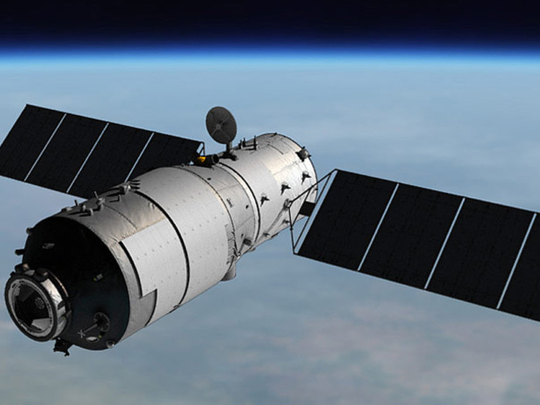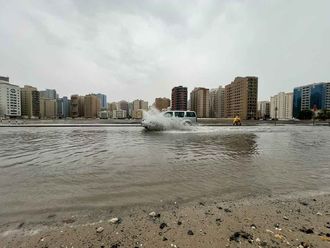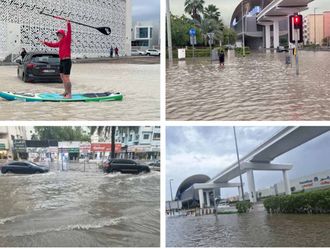
Dubai: Another chunk of space junk is expected to fall back to earth next month. The event may generally be seen from the Arab region and the UAE Space Agency will monitor the descent of the space debris.
The UAE Space Agency and the International Astronomical Centre (IAC) on Sunday announced that they will jointly monitor the descent of China’s Tiangong-1 space laboratory as it re-enters the Earth’s atmosphere.
The fiery descent is expected to take place in mid-March in areas between 43 degrees north and south latitude, which include most of the Arab region.
Tiangong-1, which means ‘Heavenly Palace’ in Chinese, experienced communication failure in 2016.
The lab has been losing altitude since the beginning of 2017 after five years in operation.
The UAE Space Agency confirmed that the lab will be vaporised upon re-entry, prior to reaching the ground.
Dr. Eng. Mohammad Nasser Al Ahbabi, Director-General of the UAE Space Agency, said: “The Earth witnesses the fall of many objects, including satellites and other debris, on a daily basis. These objects do not pose a threat to the planet or its population due to their small size or the speed at which they are vaporised in the earth’s atmosphere. Those that make it through are often scattered over vast areas in the form of very small stones.”
The formation of a monitoring team is essential to give the right information at the right time to the public.
UAE residents witnessed a fireball flashing through the night sky for roughly 80 seconds on the night of October 16 and many were quick to speculate that the descending fireball was a meteor or a meteorite.
40 space junks
There are more than 40 space junks that are forecast to re-enter earth in 2018, according to satellite monitoring site, satview.org.
Not all will be visible in the UAE, however.
As for the Tiangong-1, the Lab was launched late September 2011 to carry out a variety of experiments. The 8.5-tonne lab is 10.5 metres long and is 3.3 metres wide in diameter.
Al Ahbabi said the UAE is well equipped and experienced in monitoring and determining the coordinates of space objects, meteors and meteorites.
“Many of our capabilities stem the UAE Meteor Monitoring and Filming Network, which was launched two years ago to support scientific research. Today, the network successfully provides reports and studies on meteor traffic over the UAE,” he said.
The Network was launched as a joint venture between the UAE Space Agency and the IAC, which consists of three different stations distributed throughout the UAE to record astronomical phenomena in the sky.
Each station has astronomical cameras directed towards the sky that automatically start recording once a meteor is detected, which may be part of a shower or a piece of space debris. Once the meteor is detected by more than one station, its path is calculated so that its source can be determined.
Final countdown
Satellites over time are subject to orbital “decay”, the process where they lose their orbit due to a drag force and then they start their return to Earth.
When this happens, the space junk re-enters the Earth’s atmosphere but they are designed to fall slowly to ensure that the chunks disintegrate in space, and the leftovers, if any at all, will descend on uninhabitable areas. This makes space junk landing non-hazardous.
Source: Dubai Astronomy Group












